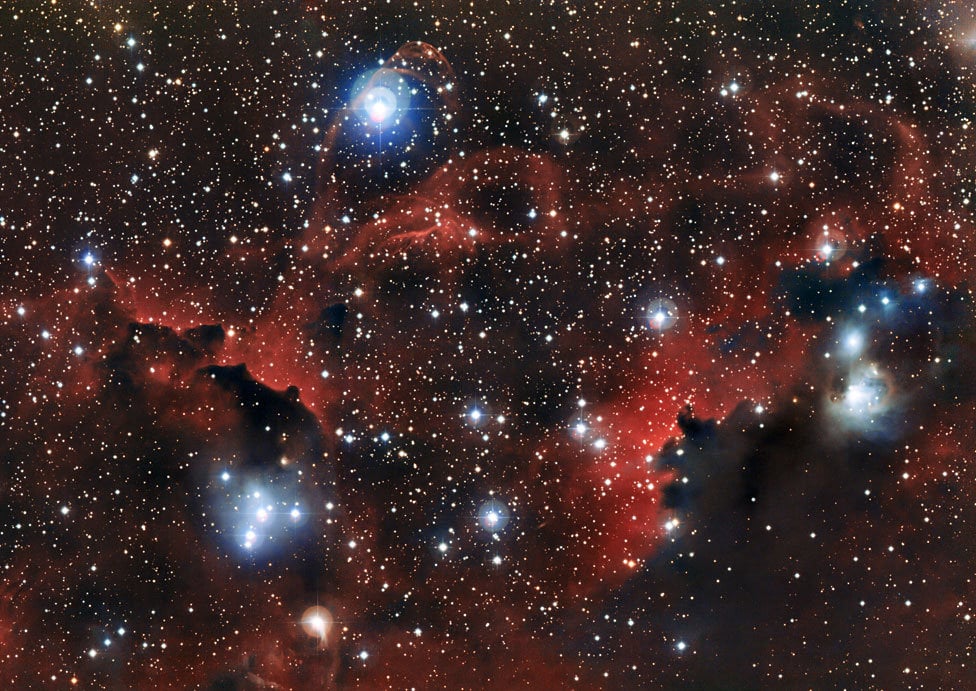These glowing red clouds are just a small part of the wings of an enormous bird -- the Seagull Nebula, a band of gas and dust 3,400 light-years away that shines from UV light radiating from hot newborn stars.
This image was made from observations with the
MPG/ESO 2.2-meter telescope
at the ESO
La Silla Observatory
in Chile. See the full wide-field view of the Seagull Nebula below.
The Seagull Nebula (IC 2177) is a vaguely bird-shaped region of gas and dust clouds located between the constellations Canis Major and Monoceros. The detail image at the top of this article is located along the upper edge of the gull's lower wing, and is separately cataloged as Sharpless 2-296.
The bright red glow is the result of ionized hydrogen energized by the radiation from the several hot, bright young stars seen in the image. H II regions like the Seagull Nebula are signs of ongoing star formation in a galaxy -- in a spiral galaxy like our Milky Way, these dust clouds are scattered throughout the arms. In fact, it was observations of such nebulae in the 1950s by Stewart Sharpless that helped determine the spiral structure of the Galaxy.
The silhouettes of dark, dense clouds closer to Earth block the red hydrogen glow from more distant areas of Sharpless 2-296.
Read more on the ESO site
here
.
 Universe Today
Universe Today
